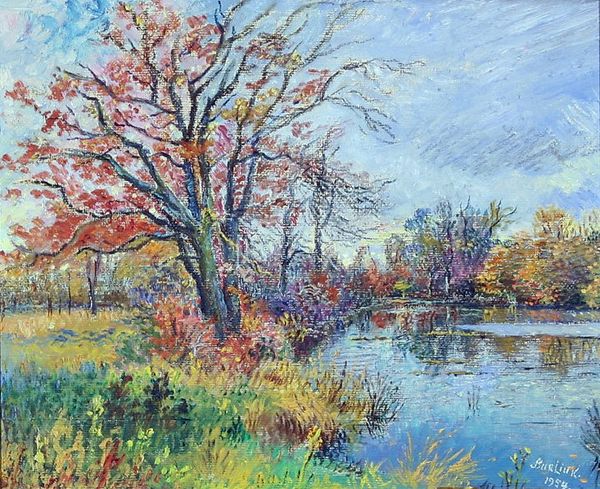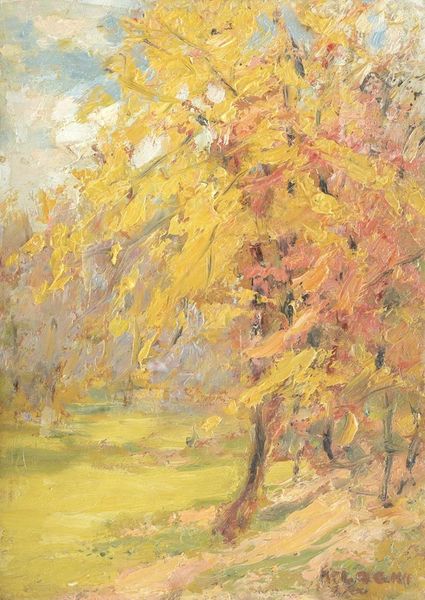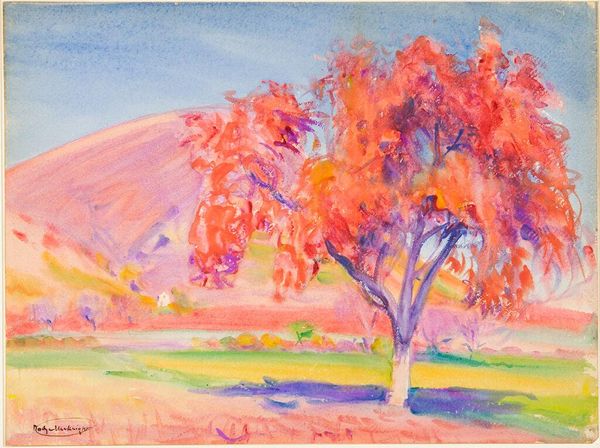
Copyright: Public domain
Editor: So, this is Armand Guillaumin’s "Echo Rock," painted in 1905. It’s an oil painting, full of such vibrant colors. The whole thing feels very textural, like you could almost touch the leaves. What strikes you about this work? Curator: I'm particularly interested in Guillaumin's application of paint. Notice the thick impasto, the way the oil paint is built up on the canvas, creating this tactile surface. It begs the question, how does this materiality speak to the societal values around labor and production at the turn of the century? Was Guillaumin perhaps elevating the act of physical labor involved in creating art? Editor: That’s interesting, I hadn’t thought about it in terms of labor. So you're saying the thickness of the paint itself is making a statement? Curator: Exactly! Impressionism was revolutionary in its break from academic tradition, which typically prized a smooth, almost invisible brushstroke. Guillaumin, by making the materiality so apparent, challenges that hierarchy and foregrounds the artist's hand, their physical engagement with the materials. Look at the sheer volume of oil paint - was that paint produced industrially? What processes did the artist utilize in paint application? Editor: So, by emphasizing the materials, he is sort of bridging the gap between 'high art' and the craft of making? Curator: Precisely! It pushes us to consider the value and the role of materials in creating artistic meaning. Does the commercial availability of materials like oil paint alter an artist's message? Editor: This gives me a completely different way to view Impressionism, thinking beyond just the light and color. Curator: Yes, looking at the material conditions helps us see beyond the surface and appreciate the deeper layers of meaning. Editor: Thanks, that perspective really opened my eyes! I will always have your viewpoint of materiality as social statement now.
Comments
No comments
Be the first to comment and join the conversation on the ultimate creative platform.













